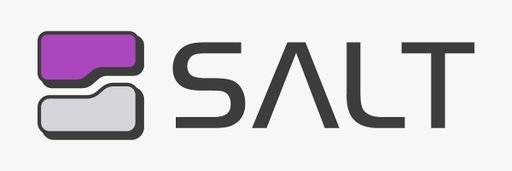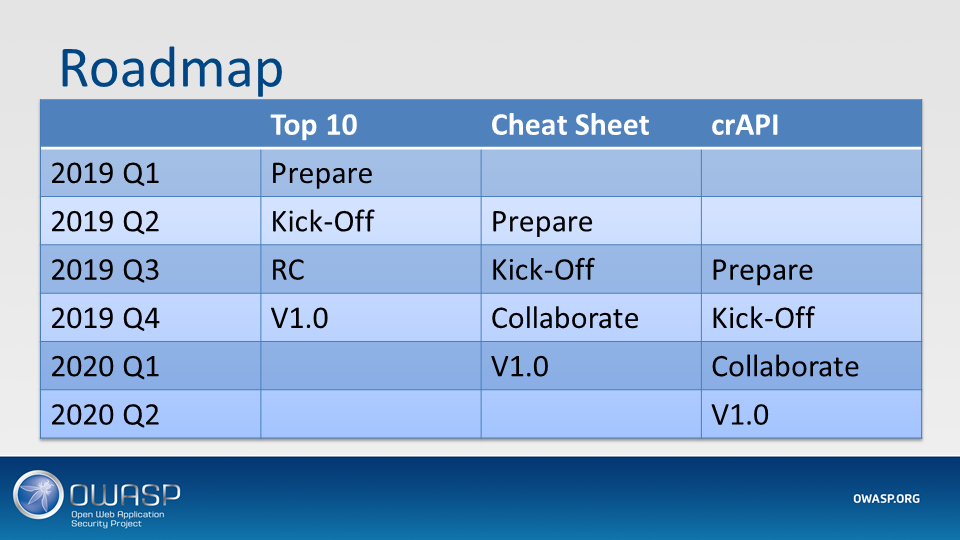This site is the archived OWASP Foundation Wiki and is no longer accepting Account Requests.
To view the new OWASP Foundation website, please visit https://owasp.org
Difference between revisions of "OWASP API Security Project"
From OWASP
(Tag: Visual edit) |
PauloASilva (talk | contribs) (Update with 2019 Stable version contents) |
||
| Line 15: | Line 15: | ||
==API Security Top 10 Release Candidate is Here!== | ==API Security Top 10 Release Candidate is Here!== | ||
| − | + | Here is a sneak peek of the 2019 version: | |
| − | Here is a sneak peek: | ||
{| class="wikitable" | {| class="wikitable" | ||
|- | |- | ||
| − | | API1 || Broken Object Level Authorization || APIs tend to expose endpoints that handle object identifiers, creating a wide attack surface Level Access Control issue. Object | + | | API1 || Broken Object Level Authorization || APIs tend to expose endpoints that handle object identifiers, creating a wide attack surface Level Access Control issue. Object level authorization checks should be considered in every function that accesses a data source using an input from the user. |
|- | |- | ||
| − | | API2 || Broken Authentication || | + | | API2 || Broken User Authentication || AAuthentication mechanisms are often implemented incorrectly, allowing attackers to compromise authentication tokens or to exploit implementation flaws to assume other user's identities temporarily or permanently. Compromising system's ability to identify the client/user, compromises API security overall. |
|- | |- | ||
| API3 || Excessive Data Exposure || Looking forward to generic implementations, developers tend to expose all object properties without considering their individual sensitivity, relying on clients to perform the data filtering before displaying it to the user. | | API3 || Excessive Data Exposure || Looking forward to generic implementations, developers tend to expose all object properties without considering their individual sensitivity, relying on clients to perform the data filtering before displaying it to the user. | ||
| Line 32: | Line 31: | ||
| API6 || Mass Assignment || Binding client provided data (e.g., JSON) to data models, without proper properties filtering based on a whitelist, usually lead to Mass Assignment. Either guessing objects properties, exploring other API endpoints, reading the documentation, or providing additional object properties in request payloads, allows attackers to modify object properties they are not supposed to. | | API6 || Mass Assignment || Binding client provided data (e.g., JSON) to data models, without proper properties filtering based on a whitelist, usually lead to Mass Assignment. Either guessing objects properties, exploring other API endpoints, reading the documentation, or providing additional object properties in request payloads, allows attackers to modify object properties they are not supposed to. | ||
|- | |- | ||
| − | | API7 || Security Misconfiguration || Security misconfiguration is commonly a result of | + | | API7 || Security Misconfiguration || Security misconfiguration is commonly a result of unsecure default configurations, incomplete or ad-hoc configurations, open cloud storage, misconfigured HTTP headers, unnecessary HTTP methods, permissive Cross-Origin resource sharing (CORS), and verbose error messages containing sensitive information. |
|- | |- | ||
| − | | API8 || Injection || Injection flaws, such as SQL, NoSQL, Command Injection, etc. occur when untrusted data is sent to an interpreter as part of a command or query. The attacker's malicious data can trick the interpreter into executing unintended commands or accessing data without proper authorization. | + | | API8 || Injection || Injection flaws, such as SQL, NoSQL, Command Injection, etc., occur when untrusted data is sent to an interpreter as part of a command or query. The attacker's malicious data can trick the interpreter into executing unintended commands or accessing data without proper authorization. |
|- | |- | ||
| API9 || Improper Assets Management || APIs tend to expose more endpoints than traditional web applications, making proper and updated documentation highly important. Proper hosts and deployed API versions inventory also play an important role to mitigate issues such as deprecated API versions and exposed debug endpoints. | | API9 || Improper Assets Management || APIs tend to expose more endpoints than traditional web applications, making proper and updated documentation highly important. Proper hosts and deployed API versions inventory also play an important role to mitigate issues such as deprecated API versions and exposed debug endpoints. | ||






